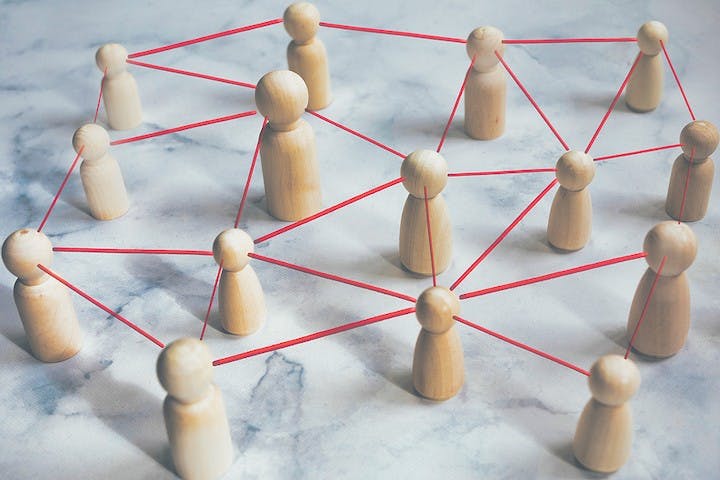Cultivating long lasting relationships is the cornerstone of success in the workplace.
Perhaps unsurprisingly, this somewhat universal sentiment has led to an explosion of emphasis on networking, across everything from LinkedIn to social clubs.
However, many now believe that networking’s short-term and transactional nature may not be the most effective approach for fostering enduring relationships and career success.
I would argue instead, that people want to work with other people they know and like, and with whom they feel a genuine connection.
As such, I believe ‘relationship building’ is the far more superior way of nurturing truly authentic relationships – that is, relationships that actually drive both personal growth and organizational prosperity.
The difference between networking and relationship building
The difference between networking and relationship building can be summed up when I was working for a large corporate in London.
Despite relationship building being vital to my career, the tools I was given (typically CRM-related ones), were geared much more towards adding a name to a sales funnel. At a time when I was looking for something that could help build genuine connection, there was little I was given that helped me cultivate anything more than cursory and superficial relationships.
By comparison, a relationship building approach is far more holistic and human-centric, focusing on empathy, trust, and shared values. The approach is less about “how can I use this contact for my own gain?” and more about how one can support each other, which is predicated on listening and understanding.
Why relationship building
Relationship-focused workplaces are those that prioritize creating an environment in which employees feel valued, respected, and connected.
When team members feel supported and understood, collaboration naturally flourishes.
Interactions become more constructive and productive, leading to innovative problem-solving and a stronger sense of camaraderie among colleagues.
It’s not surprising then that one Gallup study found that workplaces with highly engaged employees are 20% more profitable than workplaces with disengaged and disaffected employees.
Moreover, employees who said they have a “best friend” at work reported higher engagement and increased job satisfaction.
Simply put: social opportunities and friendships make for happier and more engaged employees; engaged employees do better work and make the company more money.
Building relationships
To foster relationships that have the capacity to make an impact, it is important to acknowledge that this inculcating this culture is a long-term time commitment.
Employees can’t build meaningful relationships over cocktails at one or two professional social events with a simple exchange of business cards.
That’s why it’s crucial HR encourages employees to stop trying to network, and instead trying to learn how to build relationships.
How to help staff build relationships
The best thing people leaders can do is to start employees off by helping them form good relationship building habits. These can be as small as taking down notes of their conversations with contacts.
In my conversations with clients, partners, colleagues, and industry experts, these people may at times share pieces of their personal lives, which are imperative for me to remember and reference, helping build a sense of relatability with them.
Doug Lester, renowned business coach to Fortune 100 business executives, recently shared a personal anecdote of a time where his note-taking helped him build a relationship.
By taking down notes on what his contact had shared with him in a previous interaction, Lester was able to refer back to that intimate piece of information and ask them about it, making his contact feel valued and heard.
Another way of helping staff foster strong relationships is for them to acknowledge their colleagues’ contributions and efforts better.
A simple “thank you,” a note of appreciation, or even a card can go a long way in building positive relationships. In places where people might feel their work is unacknowledged and thankless, you can show them the opposite.
It’s an organizational priority
But it’s not simply up to colleagues themselves to engage and support each other.
Organizations have a responsibility to create an environment where good relationships are possible.
This duty is particularly pertinent as people return to the office.
Experts in architectural design, social sciences, and psychology all believe that an increase in the number of public-facing spaces would make the office more appealing, allowing people to interact and build relationships across departments.
This can simply comprise changing office design; shifting away from cordoned off cubicles to simply creating more social collaborative spaces and warm and inviting break-time areas.
Decide what you want
I have little doubt that businesses and business people should prioritize relationship building over networking.
While networking may have its merits, its short-term focus and relatively impersonal nature can leave employees feeling disconnected and unsatisfied.
In contrast, relationship building fosters meaningful connections and collaboration among team members, leading to a more positive work environment and long-term benefits.
Final thoughts
By incorporating networking as a single skill within the wider more holistic field of relationship building, organizations can empower their employees to create authentic connections that promote personal and professional growth.
Emphasizing relationship-building will not only transform workplace dynamics, but it will also contribute to the company’s overall success.
